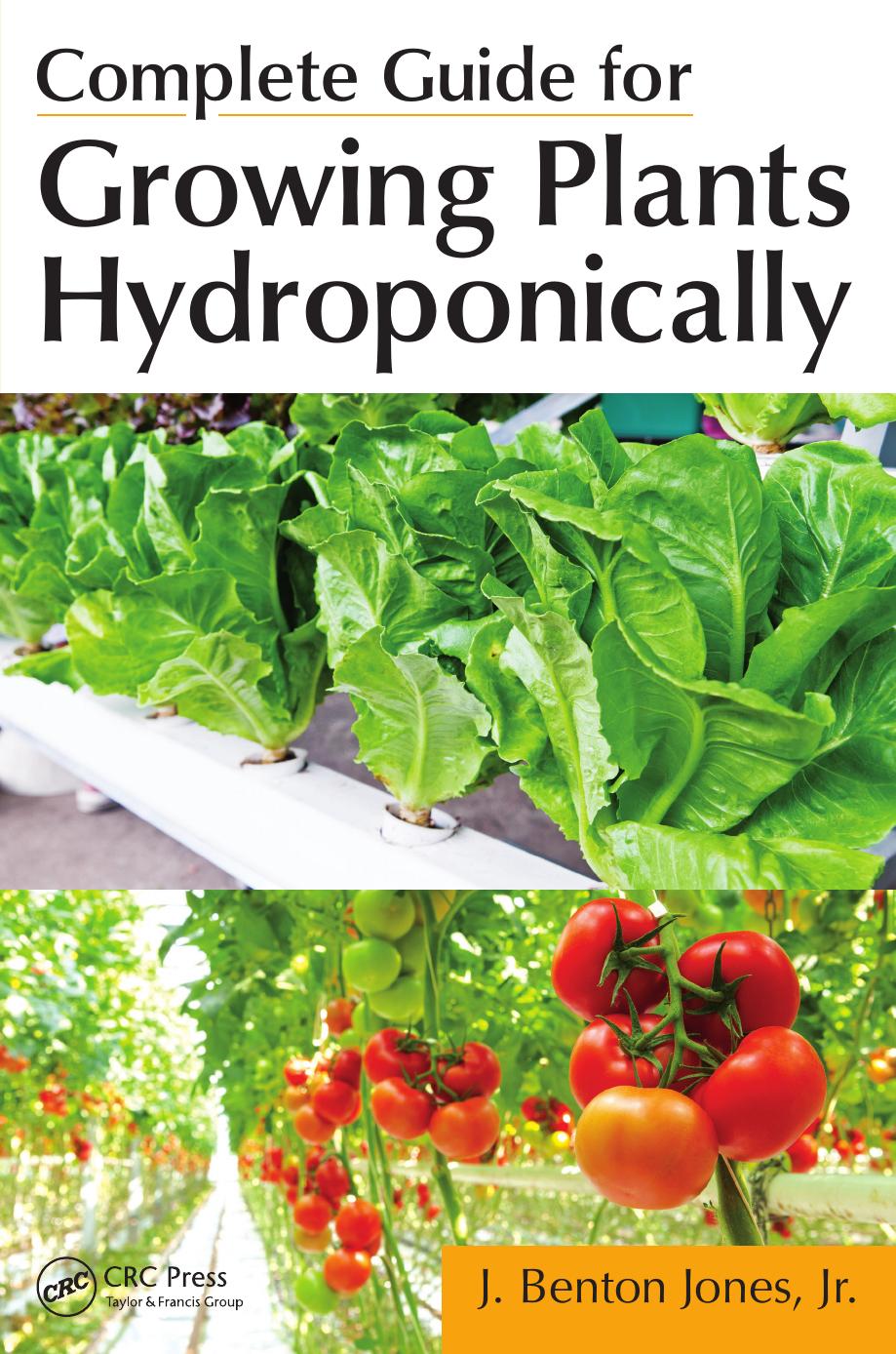Complete Guide for Growing Plants Hydroponically by Jones Jr. J. Benton

Author:Jones, Jr., J. Benton [Jones, Jr., J. Benton]
Language: eng
Format: epub, pdf
Published: 2014-01-07T19:06:14+00:00
Chapter five: Rooting media
91
Figure 5.1 Rockwool slab wrapped in white polyethylene sheeting with a rockwool cube placed on a cut opening in the sheeting.
Rockwool
Rockwool is a fibrous material produced from a mixture of volcanic rock, limestone, and coke; melted at 1500°C to 2000°C; extruded as fine fibers; and pressed into loosely woven sheets (Smith 1987). The sheets are made into slabs of varying widths (16 to 18 in. [15 to 46 cm]), normally 36 in.
(91 cm) in length, and ranging in depth from 3 to 4 in. (5 to 10 cm). The slabs are normally wrapped with white polyethylene sheets as shown in Figures 5.1 and 5.2.
Figure 5.2 A typical rockwool slab with rockwool cubes spaced as would be appropriate for growing tomatoes.
92
Complete guide for growing plants hydroponically
The slabs are normally laid flat on a prepared floor surface, which is usually first covered by white polyethylene ground sheeting. Spacing among the slabs will depend on the configuration of the growing area and the crop to be grown. Once the slabs are set in place, cuts are made along the lower edge of each slab of the polyethylene slab covering on the bottom to allow excess nutrient solution to flow from the slab. An access hole is then cut on the top of the slab sheeting to accommodate a rockwool block containing a growing plant. Nutrient solution is then delivered to each rockwool cube by means of a drip irrigation system.
Rockwool is probably the most widely used hydroponic growing medium in the world today for the production of tomato, cucumber, and pepper, although efforts are being made to find an adequate substitute because disposal of used slabs is becoming a major problem. Rockwool has excellent water-holding capacity, is relatively inert, and has proven to be an excellent substrate for plant growth (Sonneveld 1989).
Coir
Coir is a natural fiber extracted from the husk of coconutâthe fibrous material found between the hard, internal shell and the outer coat of a coconut (www.wikipedia.com). Coir is being recommended as a substitute for rockwool since it is an organic substance and can be more readily disposed of at the termination of its use as a rooting medium. Coir can be formed into blocks and slabs, such as those for rockwool, and used in much the same way.
Coir has much the same physical properties as rockwool, but it does contain both essential and nonessential elementsâ mainly sodium (Na).
Therefore, coir may require water leaching to remove Na if it is high and thus could affect plant growth.
Elemental content of perlite, rockwool, and coir
These three rooting media are derived from naturally occurring substances and therefore will contain some, or many, of the essential plant nutrient elements. What portions of these elements are âavailableâ for plant utilization is not generally known, nor easily determined due to their varying parameters of use. Experience, however, would suggest that a portion of the contained elements in a rooting medium can be available for root absorption. How that determination is made is the challenge.
Samples of
Download
Complete Guide for Growing Plants Hydroponically by Jones Jr. J. Benton.pdf
This site does not store any files on its server. We only index and link to content provided by other sites. Please contact the content providers to delete copyright contents if any and email us, we'll remove relevant links or contents immediately.
Turbulence by E. J. Noyes(7921)
The Thirst by Nesbo Jo(6810)
Gerald's Game by Stephen King(4557)
Be in a Treehouse by Pete Nelson(3925)
Marijuana Grower's Handbook by Ed Rosenthal(3606)
The Sprouting Book by Ann Wigmore(3531)
The Red Files by Lee Winter(3357)
The Remains of the Day by Kazuo Ishiguro(3280)
Sharp Objects: A Novel by Gillian Flynn(2941)
Christian (The Protectors Book 1) by L. Ann Marie(2644)
Organic Mushroom Farming and Mycoremediation by Tradd Cotter(2616)
The Culinary Herbal by Susan Belsinger(2420)
Stone Building by Kevin Gardner(2337)
The Starter Garden Handbook by Alice Mary Alvrez(2272)
Lilac Girls by Martha Hall Kelly(2244)
The Unlikely Pilgrimage of Harold Fry by Rachel Joyce(2204)
The Lean Farm Guide to Growing Vegetables: More In-Depth Lean Techniques for Efficient Organic Production by Ben Hartman(2089)
Urban Farming by Thomas Fox(2054)
Backyard Woodland by Josh VanBrakle(1879)
